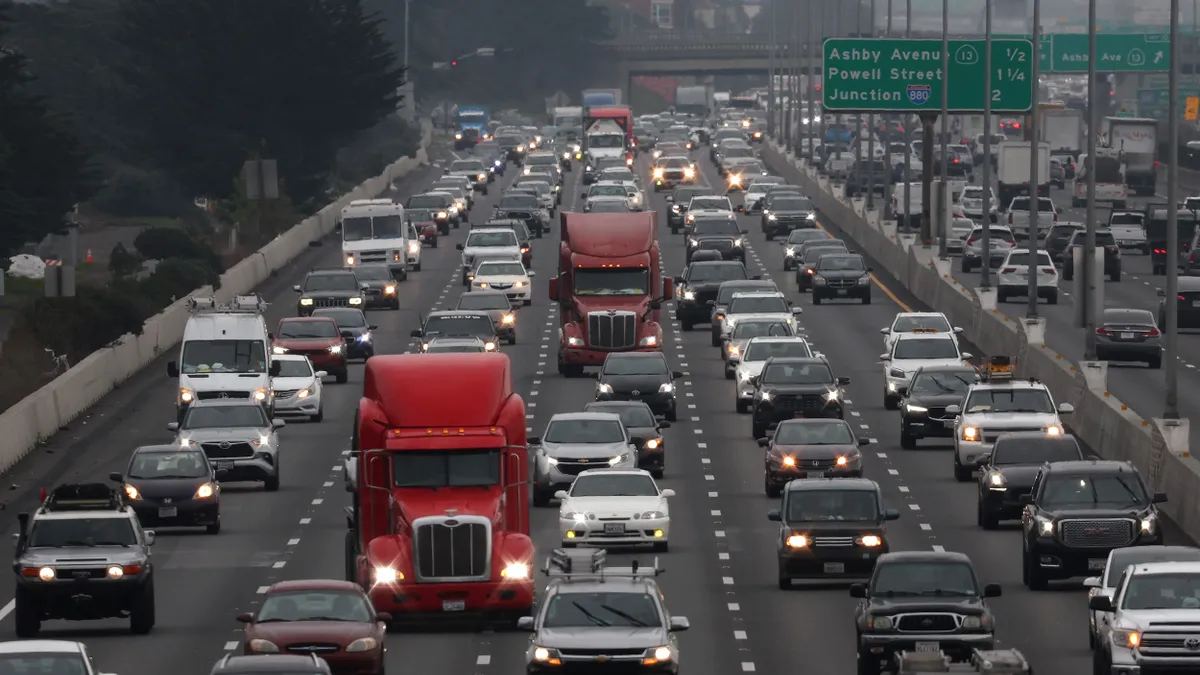Pittsburgh drivers add 81 extra hours to their commutes each year because of traffic, according to a TomTom survey. While there are other U.S. cities that have it worse, Pittsburgh is known for its difficult driving conditions, with hills, bridges and bikers — all on a gridless city where many intersections have "no right on red" signs. But drivers in Pittsburgh could soon get relief.
Varied road conditions make for tough traffic, but also for a reason why companies like Uber are coming to Pittsburgh to test autonomous vehicles. If traffic technology can work in Pittsburgh, it can work almost anywhere. And, along with AV, that traffic technology includes Surtrac, an AI system that allows traffic lights to adapt to traffic conditions instead of relying on pre-programmed cycles.
At the lights where Surtrac is installed, the team behind the system estimates that it has reduced travel time by 25%, braking by 30% and idling by more than 40%. It costs about $20,000 to wire up and install Surtrac at an intersection.
Surtrac works by detecting traffic and through creating predictive models. First, hardware, including a computer, camera or radar device, is installed at the intersection. Surtrac can then see cars that are coming to the intersection from all directions. The computer runs a predictive model and uses it to generate a signal timing plan in real-time. The processing is done in a way that, through communication with downstream models, builds a local plan from multiple data sources.
Each intersection controls its own traffic, but by communicating projected ouflows to neighboring intersections, those intersections can better prepare for incoming traffic.
Surtrac, which started as a project at Carnegie Mellon, piloted at 12 high-volume intersections in 2012. It’s now at 50 intersections with another 150 on the way, paid for with a grant from the Federal Highway Administration. In 2015, the project spun out from Carnegie Mellon as a company called Rapid Flow Technologies.
After the pilot, Steve Smith, a robotics professor at Carnegie Mellon and the head of Rapid Flow Technologies, said they could notice a significant difference in traffic flow. But they were quickly informed that they had forgotten about non-motorized traffic.
"We immediately got a lot of feedback from pedestrians, who were feeling left out of the picture,” Smith said.
Tweaks to the system made it so there was a maximum wait time for pedestrians at lights. Researchers and students at Carnegie Mellon are working on a side project to make a mobile phone app to communicate with the lights for people with disabilities who need more time to cross the street.
"It’s been said that solving traffic in urban settings can be harder than sending a rocket to the moon."

Aleksander Stevanovic
Director, Lab for Adaptive Traffic Operations & Management
The system is totally automated, but can be pulled up in real time at a central location if desired or necessary. Smith said they don’t really expect people to be manually intervening, however.
"In theory it’s one of the best,” said Aleksander Stevanovic, an associate professor of in the Department of Civil, Environmental and Geomatics Engineering at Florida Atlantic University and director of Lab for Adaptive Traffic Operations & Management (LATOM).
Stevanovic said it’s still a "theory" as it needs more testing, namely, at a minimum of a half-dozen more sites that have different traffic patterns, like longer blocks with faster-moving traffic. But he commends Surtrac for looking at previous technology and collecting as much information as possible.
"There is nothing wrong with needing improvements, these are complex systems," Stevanovic said. "It’s been said that solving traffic in urban settings can be harder than sending a rocket to the moon."
Surtrac is expanding beyond Pittsburgh — even beyond Pennsylvania — this year. It’s going to 25 intersections in Atlanta and 15 in Beverly Hills. King County outside of Chicago is also in line for Surtrac deployment.
Eventually, Surtrac will work with autonomous vehicles. Smith said they have been working over the last few years for the traffic signal control with connected cars, noting he wanted the system to be prepared "for that eventuality." A recent study found having AVs on the road to be another traffic-improving factor.
Traffic control could get even better when information is passing back and forth between the infrastructure and cars. In a simulation, Smith was able to show if a vehicle is willing to share its route with the intersection, like with dedicated short-range communications radios (DSRC) or a navigation device, vehicles move through the network 20% faster without affecting non-equipped vehicles.
"It sounds like magic," Smith said. "But once the world gets connected, we will know where cars are continuously."
Smith said they are exploring whether Surtrac could one day detect traffic accidents and other real time events, so they can start to use the information to offer rerouting advice to vehicles. They are also exploring different machine learning algorithms to reduce some uncertainty from sensor data.
Even though Surtrac will be at 200 intersections in the near future, there are over 600 intersections in Pittsburgh. Smith said they haven’t noticed a plateau in improvements as they’ve expanded — so traffic could one day be a thing of the past in Pittsburgh.
"I do feel like the more of the network that you can encompass, the smoother you’ll get to travel," he said.



















